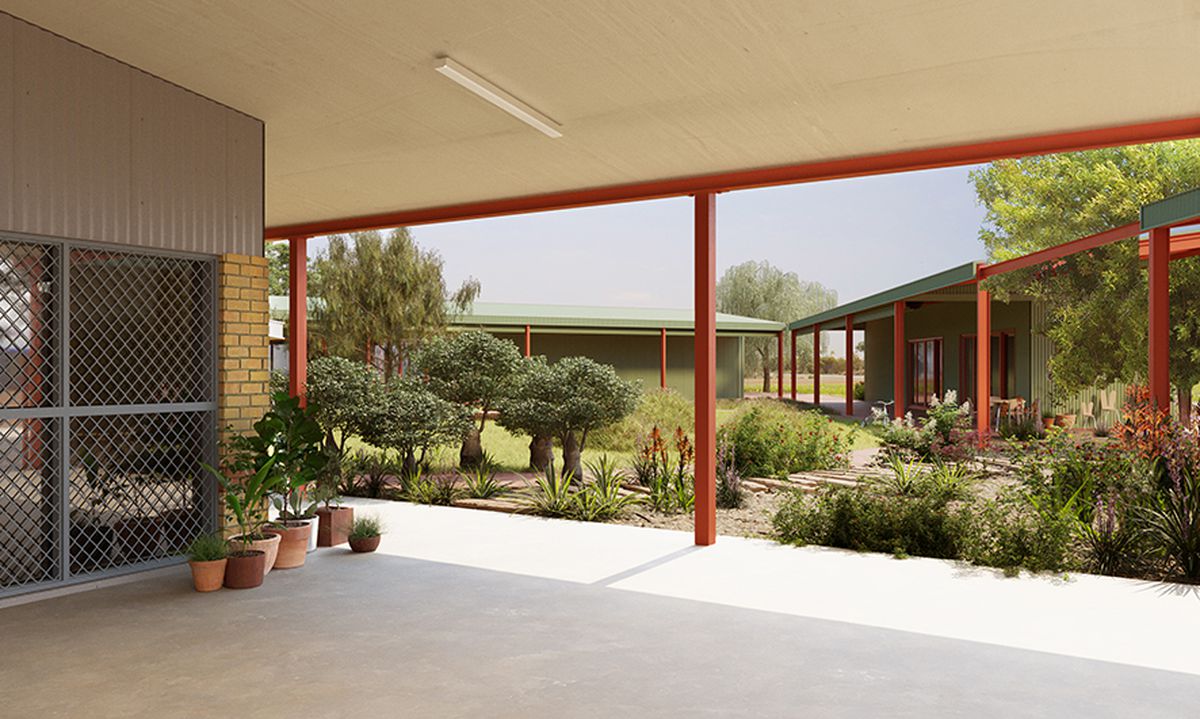UTS academics design preschool as part of “civic heart” project for Murrin Bridge

Murrin Bridge, a remote Aboriginal community located 320 kilometres south-west of Dubbo, in Central New South Wales will have a new “civic heart” anchored by a preschool space after a proposal prepared by a group of University of Technology Sydney (UTS) architecture academics gained development approval.
The proposal, which was informed by a series of design consultation workshops with the community, calls for the retention of the existing Murrin Bridge Preschool (established in 1991) and the addition of two new pavilion buildings, which will be arranged around a triangular courtyard.
As a result, the existing preschool space will now be able to accommodate up to 40 children aged between three and five years of age, along with 12 staff.
The redesign will also recover public services which recently relocated to the larger town of Lake Cargelligo (including health services and land council offices), and relocate the Regional Enterprise Development Institute and Centrelink offices currently based in “a derelict building” nearby.
While Murrin Bridge has a population of around 86, according to previous census figures, many of the community trace their roots to Ngiyampaa and Barkindji Country, and the area is thought of as a “Koorie place,” not as the Country of a particular group.
The design process, the architects said, included “the enthusiastic participation of the Murrin Bridge Local Aboriginal Land Council, the staff and students of the preschool, and the different service providers to imagine what lies ahead for the preschool and community hub collectively.”
Improvements to the existing preschool will involve better connections between the kitchen and dining room, a gallery space being added, and an outdoor kitchen.
A second pavilion, measuring 33 metres long with a 12-metre-wide pitched roof barn, will house further space for the school along with the various community hub facilities. It will be flanked by two three-metre-deep verandahs.
The third pavilion will host an outdoor playground and three storage rooms. The new additions will be built using “off-the-shelf construction solutions typical to local agricultural sheds”.
Within the courtyard users will find a fire pit, several trees and some mounds for play and for sitting. On the edges of the space, a number of gardens will be developed, with the first garden as the school’s main playground and the entrance for students to arrive by bus; the second connecting the existing school with its new extension; and the third opening to Murrin Bridge and the community hub.
The outdoor courtyard will be easily accessible from all internal areas, while the building itself will appear from the outside to be “a conventional rural or industrial shed”.
“Working with familiar materials and building types of the area is a purposeful decision,” the architects said.
“Playfully subversive, the building has the ability to adjust its identity, adopting a serious and formal civic role whilst at other times being comfortable, relaxed and childish. We believe that this controlled ambiguity is the best response to the complex project brief.”
To read the original coverage of this story, as prepared by ArchitectureAU, please see here.
Popular

Policy
Practice
Quality
Provider
Research
Safety starts with supervision: responding to real risks in ECEC
2025-07-07 10:30:58
by Fiona Alston

Policy
Provider
Practice
Quality
Jay Weatherill appointed to co-lead urgent review into childcare safety in Victoria
2025-07-07 07:24:04
by Fiona Alston

Quality
Practice
Provider
Workforce
Reclaiming Joy: Why connection, curiosity and care still matter in early childhood education
2025-07-09 10:00:07
by Fiona Alston













